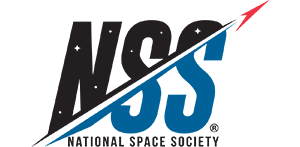|
Curator: Al Globus If you find any errors on this page contact Al Globus. |
 |
This site was hosted by the NASA Ames Research Center from 1994-2018 and is now hosted by:

Appendix B: Properties and Uses of Concrete
Gene Corley
Properties of Concrete
Concretes that can now be formed have properties which may make them valuable for lunar or space construction. These properties include high compressive strength, good flexural strength (when reinforced), and favorable responses to temperature extremes (even increased strength at low temperatures). These and other properties of concrete are described in T. D. Lin's contribution to this report (" Concrete: Potential Material for Space Station").
Higher quality cements and products may become possible. Among other possibilities is manufacture of "zero-macro- defect" concrete products. When manufactured on Earth, these materials have the potential for developing a tensile strength of 15 000 psi [103 megapascals (MN/m²)] and a.compressive strength of 30 000 psi (207 MN/m²). Although they are made at relatively low temperatures and pressures, they have properties similar to those of some ceramics,
Other properties of concrete that make its application attractive are good radiation absorption and stability at high temperature. Porosity and permeability may be a problem, necessitating the addition of impermeable coatings in some applications.
Fabrication Techniques
Procedures common on Earth can be used to fabricate structural products.
The following techniques are possible:
Of the techniques available, autoclaving appears most attractive for" high strength" products.. This can be done by placing molded concrete units in a pressure vessel painted black on one side. Curing can be accomplished within a few hours. All free water can be recaptured for reuse. Autoclaving will accelerate the cure and produce concretes that contain less combined water than products cured at low temperatures and have greater volume stability upon drying. which are advantages in the space environment. Slag-type silicate-based hydraulic cements are well suited to autoclaving, because the high temperatures accelerate the hydration reactions.
Shotcreting can be used to construct large monolithjc structures. Pressure vessels, structured shapes, floor slabs, and wall panels can be fabricated with the use of glass fiber reinforcements. Molds made of inflated membranes can be used for large enclosures. As in the case of autoclaving, free moisture can be recaptured.
For some applications, such as patching or grouting, where conditions make special curing impossible, a relatively quick- setting cement might be needed. Portland cements are not well suited to such applications, but phosphate cements could be developed to meet such needs. Sulfur cements, which do not require water, have been suggested, but they have poorer properties than hydraulic cements. Special composition cements are a topic worthy of further research.
On the Moon, buildings made of concrete and sheltered by a soil covering can be used as space for living, manufacturing, and storage. The amount of energy used in concrete construction can be low, and the level of worker skill does not need to be high for good results.
As concrete processing technology using appropriate lunar materials develops,
concrete may find application in Earth orbit for construction of large structures
(see T. D. Un's paper). Concrete materials such as aggregate, cement, and oxygen
from the Moon and hydrogen from Earth can be transported and, in advanced scenarios,
at competitive transportation costs. Where large masses of material are desired,
concrete has the advantage over unprocessed or sintered material in that it
can be cast into compartmented but monolithic structures of high strength, using
lightweight forms (e.g., inflated impermeable membranes).
Indeed, the versatility of concrete for construction on Earth may be matched
in space.
|
Curator: Al Globus If you find any errors on this page contact Al Globus. |
 |
This site was hosted by the NASA Ames Research Center from 1994-2018 and is now hosted by:
